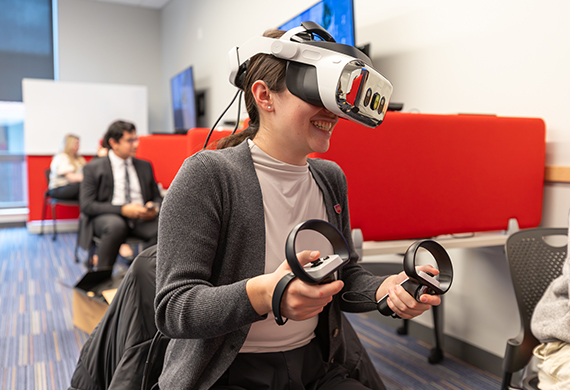Marist Bureau of Economic Research Releases Hudson Valley Commutation Trends Report
Findings show stable employment for region following the Great Recession; more than half of residents commute to jobs within the Hudson Valley
A new report from the Marist Bureau of Economic Research shows that nearly 56 percent of all Hudson Valley residents who work commute to their jobs and employment within the Hudson Valley remains the norm at 59 percent of all jobs held. The report also shows that overall employment is strong for Hudson Valley residents.
Based on data from the U.S. Census Bureau, the report, “Commutation Trends in the Hudson Valley” examines the years 2013-2015. All seven Hudson Valley counties are included: Dutchess, Orange, Putnam, Rockland, Sullivan, Ulster, and Westchester. The full report is available here: http://www.marist.edu/management/bureau/ .
“This report confirms that the region really has settled into a period of employment stabilization following the Great Recession,” noted Christy Huebner Caridi, Director of the Marist Bureau of Economic Research. “However, we’re also seeing more people ages 55 and older who are working—a trend that points not only to an aging baby boomer demographic, but also to an important impact the recession had on retirement security.”
The region’s overall labor market efficiency continues to decline. “We simply have more Hudson Valley residents holding jobs than we have employment opportunities within the region,” Caridi explained. As a result, commuting to New York City accounts for nearly 43 percent of all commutes for working Hudson Valley residents. Other key commute destinations included Long Island, New Jersey, and Connecticut.
Other key findings:
Individuals aged 30-54 are the most important working-age demographic in the region with the highest labor-force participation rate—more than 68 percent in 2015.
Nearly 43 percent of all Hudson Valley job-holders commute to New York City; Westchester County residents have the highest percentage of commuters to New York City at 35 percent.
Ulster County residents are the most dependent on intraregional employment with 75 percent of all primary jobs held within the Hudson Valley.
In 2015, Hudson Valley residents with more than one job increased; the majority of multiple job holders were aged 30-54, followed by workers 55 and older.
The upshot is clear. “Employment levels in the Hudson Valley are healthy,” said Caridi. “But more opportunities within the region would be a boon to commuters currently heading to New York City every day.”
About the Marist Bureau of Economic Research
Housed within the Marist School of Management, the Bureau of Economic Research typically releases five reports each year regarding different aspects of the Hudson Valley economy, including household income, income tax analysis, commutation patterns of workers, migration, and overall employment and wages. All reports are available on the Bureau’s website, marist.edu/management/bureau/.
About Marist
Located on the banks of the historic Hudson River and at its Florence, Italy campus, Marist College is a comprehensive, independent institution grounded in the liberal arts. Its mission is to “help students develop the intellect, character, and skills required for enlightened, ethical, and productive lives in the global community of the 21st century.” Marist is consistently recognized for excellence by The Princeton Review (Colleges That Create Futures and The Best 381 Colleges), U.S. News & World Report (9th Best Regional University/North), Kiplinger’s Personal Finance (“Best College Values”), and others. Though now independent, Marist remains committed to the ideals handed down from its founders, the Marist Brothers: excellence in education, a sense of community, and a commitment to service. Marist educates approximately 5,000 traditional-age undergraduate students and 1,400 adult and graduate students in 47 undergraduate majors and 15 graduate programs, including fully online MBA, MPA, MS, and MA degrees. www.marist.edu



